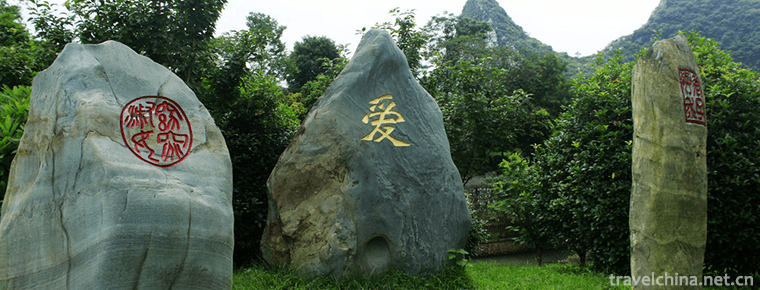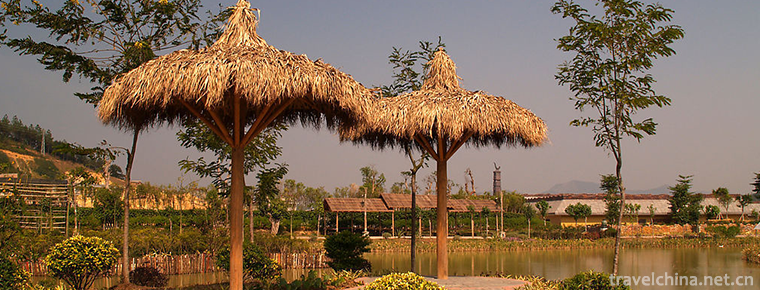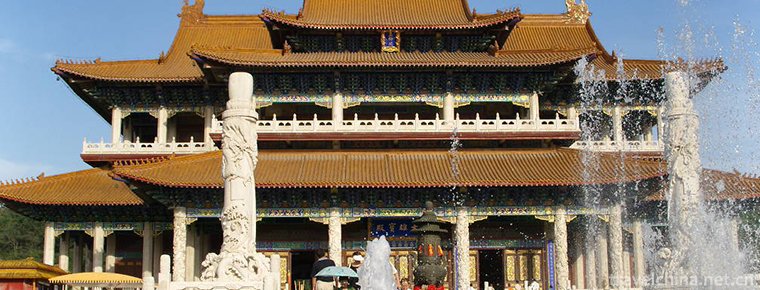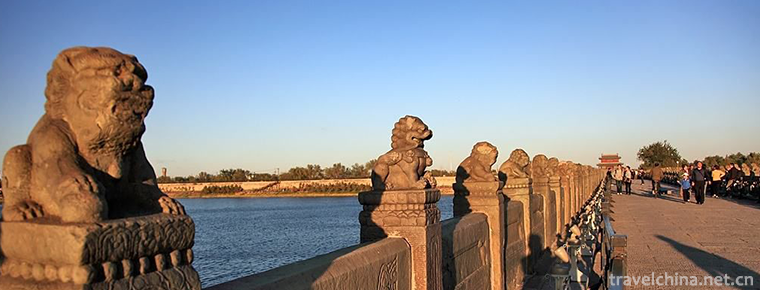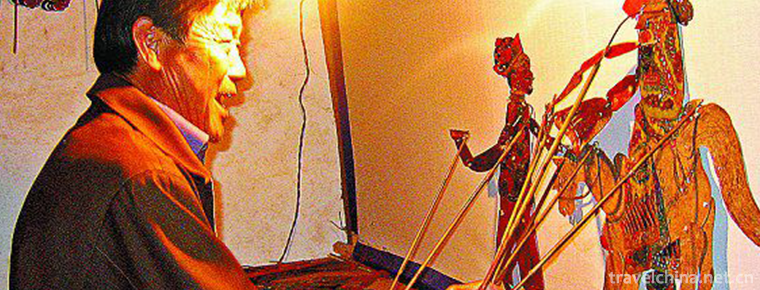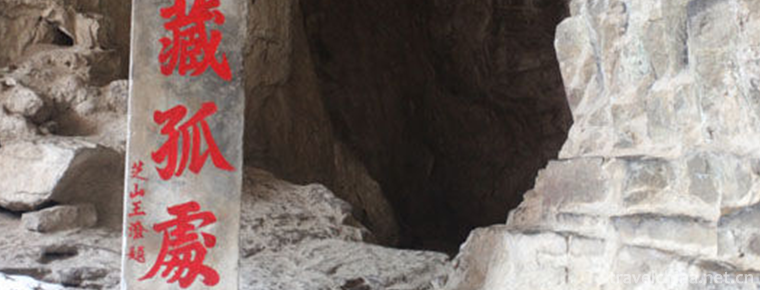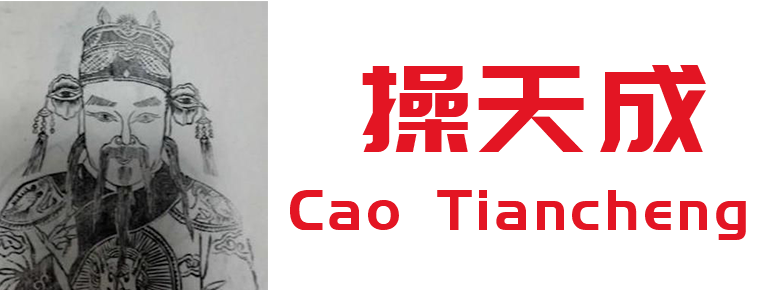Hengdian Film and Television City Scenic Area
Hengdian Film and Television City Scenic Area
Hengdian Film and Television City is a large-scale comprehensive tourist area which integrates film and television, tourism, vacation, leisure and sightseeing. It has been rated as the national AAAAA-level tourist attraction for its rich cultural background and unique historical scenes. In 1996, it was set up to cooperate with the famous director Xie Jin to shoot the historical blockbuster Opium War, and was officially open to the society.
Hengdian Film and Television City is located in Hengdian Town, Dongyang City, Jinhua City, Zhejiang Province. It is located in the four-hour traffic and tourism economic circle of Jiangsu, Zhejiang, Shanghai, Fujian and Jiangxi. Since 1996, Hengdian Group has invested 3 billion yuan in the construction of 13 film and television shootings spanning thousands of years, including Guangzhou Street, Hong Kong Street, Ming and Qing Palace, Qinwang Palace, Qingming Shanghe Tu, Huaxia Cultural Park, Ming and Qing Dynasty Residence Expo City, Dream Valley, Pingyan Cave House, Dazhi Zen Temple, Red Army Long March Expo City, Spring and Autumn Tangyuan and Yuanming New Garden. Base and two super large modern studios.
Hengdian Film and Television City has become the world's largest film and television shooting base, China's only "national-level film and television industry experimental zone", by the United States, "Hollywood" magazine called "China Hollywood".
On October 12, 2017, Hengdian Film and Television officially landed on the Shanghai Stock Exchange, offering 53 million shares at a price of 15.45 yuan per share, accounting for 11.70% of the company's total equity after the issuance.
geographical environment
Hengdian Film and Television City is located in Hengdian Town, Dongyang City, Jinhua City, Zhejiang Province. It is 18 kilometers away from the center of Dongyang City, 180 kilometers away from Hangzhou and Wenzhou, and within the four-hour traffic and tourism economic circle of Jiangsu, Zhejiang, Shanghai, Fujian and Jiangxi. It can be accessed directly by air, train or by expressway. The total area is more than 30 square kilometers, and its core scenic area is more than 20 square kilometers.
Historical development
Hengdian, once unknown town, with the continuous upgrading and development of film and television culture and tourism products in Hengdian Film and Television City, the strategic transformation from a single "film and television base" to a film and television theme tourism park.
In 1996, Guangzhou Street Scenic Area, the first film and television shooting base, was built to shoot the gifted blockbuster Opium War.
In 1997, the King of Qin Palace scenic spot was constructed for the production of the historical blockbuster Jing Ke stabbing the King of Qin.
In 1998, Hong Kong Street, Qingming Shanghe Tu and Ming and Qing Palace Garden scenic spots were built.
In 1999, Jiangnan Water Township Scenic Area was built and the first "Chinese Farmers Tourism Festival" was held.
In 2000, in order to attract more domestic and foreign theatre groups to shoot in Hengdian Film and Television City, Hengdian Film and Television City is free of rent for all scenes of film and television shooting. The National Tourism Administration created an excellent tourist city inspection team to Hengdian. The Director of the National Tourism Administration inscribed Hengdian as "Chinese Farmer Tourist City", and two super-large modern studios were built one after another.
In 2001, Hengdian Group Zhejiang Film and Television Travel Industry Co., Ltd. integrated more than 20 enterprises related to all film and television shooting bases, star hotels, film and television shooting and tourism reception services under Hengdian Group.
In 2001, Hengdian's film and television tourism achieved initial success. The number of tourists doubled compared with the previous year. Zhang Yimou's film Heroes was filmed in the Qin Palace scenic spot. Establishing a film and television management center to unify the management and operation of supporting services such as scenery, props, clothing, cosmetics, vehicles, equipment leasing, actors and so on, has become one of the most standardized managers and service providers in domestic film and television shooting bases. Integrating the marketing team of each scenic spot and setting up a unified tourism marketing company, this is the first step in the industry, and the innovation of the marketing system has prepared the conditions for a substantial increase in the number of tourists.
In 2002, 12 film and television shooting bases were built, and three natural scenic spots such as Shenlixia in Pujiang River were developed.
In 2003, Hengdian Group Zhejiang Film and Television Travel Industry Co., Ltd. was formally renamed Zhejiang Hengdian Film and Television City Co., Ltd. The Actors Association was established to provide a large number of performance opportunities for amateur actors. There were thousands of registered actors, and nearly 70,000 people appeared as mass actors and special actors in that year.
In 2004, Hengdian was approved by the State Administration of Radio, Film and Television as China's only national film and television industry development base - Zhejiang Hengdian Film and Television Industry Experimental Zone was officially listed. The 8th China International Children's Film Festival and China Hengdian Film and Television Expo 2004 were also held.
In 2004, Chen Kaige's film "Wuji" started shooting in the scenic spot of the Qin Palace.
In 2005, from 1996 to 2005, more than 300 theatre groups were received, and nearly 10,000 films and TV series were produced. In 2005, more than 3 million tourists were received.
In 2010, Hengdian Film and Television City entered Tongzhi Shopping Center, Shanxi Province, the largest shopping brand channel in North China.
On June 28, 2011, the first "Top 100 Tourist Scenic Spots in China" was released. Hengdian Film and Television City ranked fourth in the "Top 100 Tourist Scenic Spots in China" list with 8.41 million tourists in 2010.
At the end of June 2012, a large-scale holographic multimedia reality show "Dragon Play Phoenix" with an investment of more than 350 million yuan appeared in the Qingming Shanghe Scenic Spot of Hengdian.
On July 21, 2012, the carefully planned sixth edition of "Dream Taiji" was launched.
On August 28, 2012, Zhejiang Post Office, Zhejiang Filmmakers Association and Hengdian Film and Television City jointly launched a personalized commemorative stamp for the 100th anniversary of the birth of Chinese films. Hengdian Film and Television City personalized commemorative stamps, small stamps and Hengdian Film and Television City postcards, first day souvenir envelopes, etc. Hengdian Film and Television City personalized commemorative stamps 8 small stamps per edition, Hengdian Film and Television City stamp postcards 12 per set. The small stamps and postage postcards have selected the representative scenic spots of Hengdian Film and Television City as their contents.
In December 2012, the tourist reception of Hengdian Film and Television City exceeded 11.77 million, a new historical record.
In April of 2013, more than 100 million yuan was invested. The 4D ride experience project "Dragon Emperor's surprise" and the performance of the large-scale song and dance show "Forbidden Code" were officially launched. In the same month, Ferris Wheel, a new amusement facility in the Dream Valley scenic area, shocked the public.
In 2015, there were 638 enterprises and 242 studios in Hengdian Film and TV Cultural Industry Experimental Zone.
2016 is the 20th anniversary of the founding of Hengdian Film and Television City. In the past 20 years, Hengdian has become the representative symbol of China's film and Television Cultural industry. It has received more than 1700 film and television groups and more than 100 million tourists. As of 2017, 2155 Chinese and foreign films and TV works have been filmed in Hengdian.
Honors
Name card honor
Jiangnan First Town
Hengdian, known as "the first town in the south of the Yangtze River", is the largest film and television shooting base in Asia. In 1999, Hengdian was praised as "Hollywood in China" by Hollywood Reporting, the most authoritative professional magazine in American film and television circles.
Hengdian Film and Television City has created and broken many Chinese records of the China World Records Association, and has been selected as the largest film and television city of the World Records Association in China, creating many of the world's largest.
Hengdian Film and Television City received 1.28 million tourists in 2002, and more than 12 million tourists visited Hengdian in 2011, with an income of 6 billion yuan.
Hengdian's added value of cultural industry accounts for 28% of GDP, which is more than 10 times the national average of 2.78%.
Hengdian Film and Television City, the world's largest film shooting base, has more than 5,000 works at home and abroad.
The largest scale of construction
Hengdian Film and Television City has 12 film and television shooting bases, with a total land area of 4963 Mu and a building area of 495995 square meters. Hengdian Film and Television City is the largest film and Television City in China and even in Asia.
The biggest tourist attractions are the Qin Palace, Shanghe Tu of Qingming Dynasty and Palace Court of Ming and Qing Dynasty, which are under the jurisdiction of Hengdian Film and Television City. The construction scale of these three bases ranks first in the same kind of shooting bases (scenic spots) in China.
The highest Buddha statue in the room
The main hall of the restored Dazhi Zen Temple is 45.05 meters tall, and the temple's Sakyamuni Buddha is 28.88 meters tall. The indoor Buddha statue is the second highest in China.
Film and TV shooting is the most frequent
Hengdian Film and Television City has received more than 200 drama groups since 1996 when the film "Opium War" was filmed, and has produced more than 4000 films and teleplays by the end of 2003.
The largest number of mass actors
According to statistics, there were more than 1200 supporting actors of the "Crossdrift" group with certain performing skills in Changju Hengdian in 2003, and more than 1100 registered mass actors who participated in the shooting.
Max indoor studio
There are two high-tech studios in Hengdian Film and Television City, one of which is 1944 square meters and 23 meters high. It is the largest indoor studio in China.
In April 2007, it was named "the advanced collective of the National Tourism system", which is the only private enterprise in China to win this honor.
China's only "national-level film and television industry experimental zone".
Awards and honors
In 2000, Hengdian Film and Television City was awarded the first batch of national AAAA-level tourist attractions by the National Tourism Administration.
In 2003, it was selected as "ten best and most attractive tourist attractions in Zhejiang Province".
In 2006, Hengdian Film and Television City was awarded as "China's Top Ten Film and Television Shooting Bases".
In April 2007, the Ministry of Personnel and the National Tourism Administration awarded Zhejiang Hengdian Film and Television City Co., Ltd. the honorable title of "National Advanced Collective Tourism System", which is the only private enterprise in Zhejiang Province to win this honor.
In June 2007, Hengdian Film and Television City was selected as "the most distinctive film and television shooting base in China" by the 10th Shanghai International Film Festival.
In February 2009, Hengdian Film and Television City was designated as Zhejiang Province Cultural Industry Demonstration Base by the Provincial Department of Culture.
In March 2010, Zhejiang Brand Strategy Promotion Committee officially recognized Hengdian Film and Television City as Zhejiang Brand.
On April 18, 2010, the National Tourism Administration officially awarded Hengdian Film and Television City the title of national 5A tourism scenic spot; in June 2010, Hengdian Film and Television City was designated as the pilot enterprise of National Tourism Standardization by the National Tourism Administration.
On September 07, 2011, "China's Top Ten Most Influential Tourism Performances in the World" sponsored by the Chinese and Foreign Tourist Cultural Association was selected. Hengdian Film and Television City Art Troupe performed the world's largest volcanic live performance "Dream Taiji" among them.
In March 2013, Hengdian Film and Television City was awarded the 9th Zhejiang Consumer Trusted Unit.
Traffic guide
Train
Foreign tourists can arrive at Yiwu Railway Station by rail. They can take a bus directly to Hengdian Film and Television City Passenger Transport Center at Yiwu Railway Station. It runs from 6:30 a.m. to 18:30 p.m. and leaves in running water. The fare of Yiwu Railway Station shuttle bus to Hengdian is 20 yuan, which takes about 80 minutes.
automobile
Take the shuttle bus to Hengdian Film and Television City Passenger Transport Center, and transfer directly to the hotels and scenic spots by bus.
Self driving
Hangzhou direction: along Hangzhou Jinqu Expressway - Zhuyong Expressway to Hengdian Exit (the whole trip takes about 2 hours)
Ningbo Direction: Yongjin Expressway - Zhuyong Expressway under Hengdian Exit (the whole journey is about 2 hours)
Wenzhou Direction: Zhuyong Expressway to Hengdian Exit (the whole trip is about 2 hours)
Quzhou Direction: Hangzhou Jinqu Expressway - Yongjin Expressway to Dongyang Export, to Hengdian (Quzhou to Hengdian journey of about 2 hours)
Shanghai Direction: Shanghai-Hangzhou Expressway-Hangzhou Jinqu Expressway-Zhuyong Expressway Hengdian Export (the whole trip time is about 3.5 hours)
Nanjing Direction: Hangning Expressway - Hangzhou Jinqu Expressway - Zhuyong Expressway Hengdian Export
Anhui Direction: Wuhan-Xuanguang Expressway - Hangzhou Circumference - Hangzhou-Jinqu Expressway - Zhuyong Expressway Hengdian Export
Fujian Direction: Fuwen Expressway - Jinliwen Expressway Yongkang Export, Dongyang Direction, Provincial Road to Hengdian
Jiangxi to: Liwen Expressway - Hangzhou Jinqu Expressway - Yongjin Expressway, Dongyang Export, Daihengdian
flight
Far area tourists can fly to Hangzhou Xiaoshan International Airport, and the airport bus goes directly to Hengdian Film and Television City Passenger Station. Flight schedules should be consulted with airlines.
Transportation in Scenic Spot
There are tourist buses between the scenic spots of Hengdian Film and Television City. Buses run every 15 minutes and the fare is 1 yuan per person.









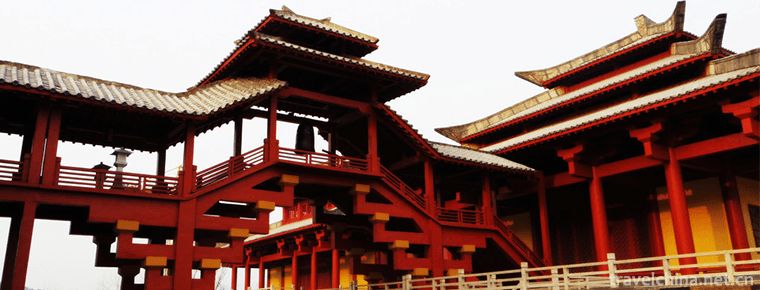
-
Chinese Elk Garden Scenic Spot
Jiangsu Dafeng Elk National Nature Reserve is located in the Yellow Sea coast, with a total area of 78,000 hectares, including 2668 hectares in the core area.
Views: 148 Time 2018-12-06 -
Shanghai Zoo
Shanghai Zoo is located at 2381 Hongqiao Road, Changning District, Shanghai, which is close to Shanghai Hongqiao International Airport. Founded in 1954, originally known as the West Suburb Park. Shang.
Views: 113 Time 2018-12-19 -
Nanxi Mountain Scenic Area Guilin
Guilin Nanxi Mountain Scenic Area (that is, Guilin Nanxi Mountain Park) is located in the south of Guilin City, about 1 kilometer north of the railway station. The two peaks of Nanxi Mountain confront.
Views: 70 Time 2019-01-13 -
Senbora Resort Forest Scenic Area
Senbora, a landscape world in ancient forests, a paradise of pleasure water under glacial ruins, a national 4A-class tourist attraction, is located at the exit of Fogang Expressway in Fogang County.
Views: 187 Time 2019-02-07 -
Jade Buddha Garden
Yufo Garden is a famous tourist attraction in Anshan. It is located in the core scenic area of Yufo Mountain. It covers an area of 270,000 square meters. It is surrounded by mountains on three sides a.
Views: 103 Time 2019-03-06 -
Legend of Lugou Bridge
The legend of Lugou Bridge is very rich in content, including the construction of Lugou Bridge, the lion on Lugou Bridge, Lugou pier chopping dragon and sword, Lugou Xiaoyue, Lugou Bridge and Wanping .
Views: 364 Time 2019-05-15 -
Shadow Show
Shadow play, also known as "shadow play" or "lantern shadow play", is a folk drama in which characters are silhouetted from animal hide or cardboard to perform stories. During the .
Views: 104 Time 2019-06-09 -
Legend of Zhaos Orphans
Zhao's orphan legend is one of the folk legends in Shanxi Province. In the folk of Yuxian County, the legends about Zhao's orphans are handed down orally and orderly. Every year, there are more than 1.
Views: 188 Time 2019-07-25 -
Zhongshan Salt Water Song
Salt water song is a form of expression of Guangdong local folk songs, which is mainly spread among farmers and fishermen in the coastal and river network areas of Zhongshan, Panyu, Zhuhai and South C.
Views: 85 Time 2019-08-03 -
Cao Tiancheng
Cao Tian Cheng, Sui Dynasty people. According to the history of Sui Dynasty in the twenty four histories, Cao Tian is also known as "Tiancheng". Ask for advice Bo Yang, Jiangxi. At the end o.
Views: 203 Time 2019-09-14 -
Chuzhou University
Chuzhou University is a full-time general in Anhui province. Undergraduate Colleges Yes. Anhui higher education revitalization program "Local application type" High level University Construc.
Views: 150 Time 2019-11-09 -
Nanchong location
Nanchong City is located in the northeast of Sichuan Basin, in the middle reaches of Jialing River, between 30 ° 35 ′ N ~ 31 ° 51 ′ N and 105 ° 27 ′ ~ 106 ° 58 ′ E. With a span of 165 km from north to South and 143 km from east to west, it is adjacent to Dazhou.
Views: 339 Time 2020-12-17


